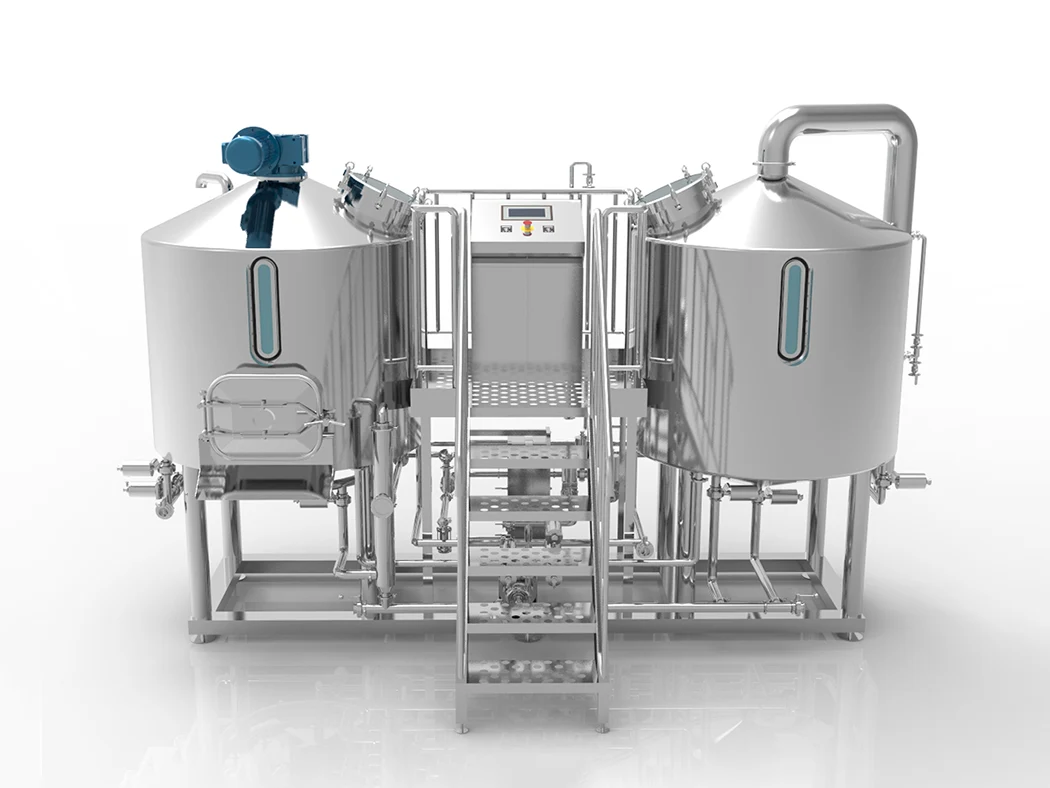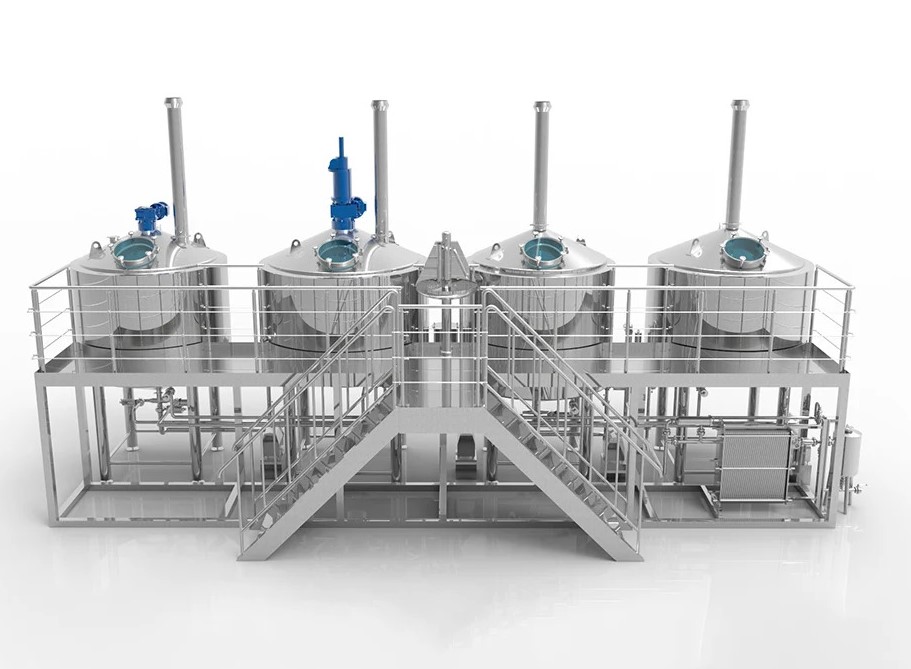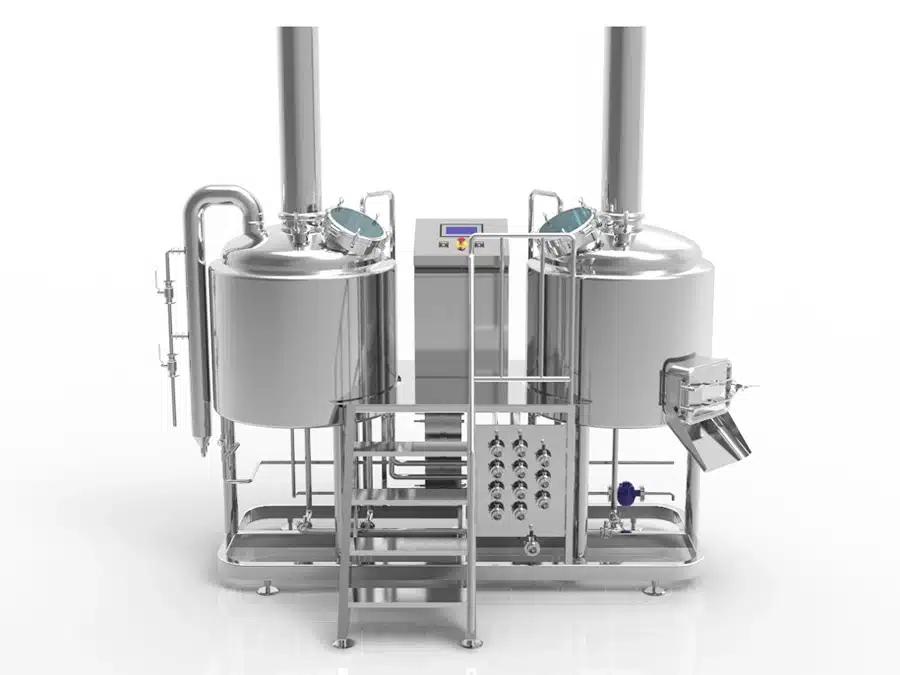Struggling with inconsistent batches, contamination risks, or equipment that just doesn’t last? Inferior cuves de mélange can lead to wasted ingredients, production delays, and ultimately, a compromised final product, hurting your brand and bottom line. Imagine achieving perfect homogeneity every time with durable, sanitaire réservoirs built specifically for your needs.
Stainless steel mixing tanks are essential for quality mixing and storage because they offer superior durability, excellent corrosion resistance, and are inherently sanitaire, preventing contamination. Their non-reactive surface ensures product purity, crucial in industries like alimentation et boissons, pharmaceuticalet chemical processing. High-quality stainless steel mixing provides reliability and longevity, safeguarding your production process and ensuring consistent product quality in every réservoir.
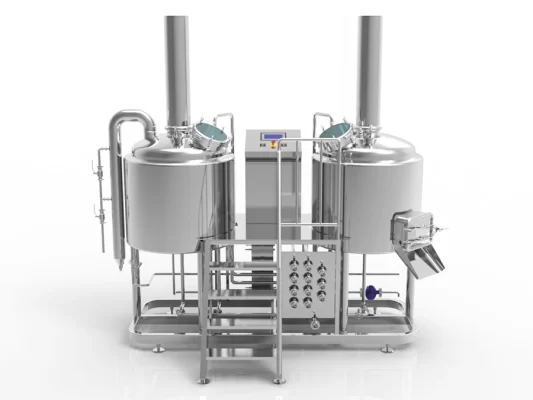
En tant que Équipement de brassage Usine de fabrication, we’ve seen firsthand how the right réservoir transforms production. We work daily with passionate creators: Startup Craft Brewery Owners carefully crafting their first batches, Experienced Brewmasters demanding precision, Brewpub & Restaurant Chains ensuring consistency across locations, and innovative Beverage Entrepreneurs venturing into kombucha or even high-quality distillery equipment. They all share a common need: reliable, de haute qualitéet customizable solutions. It’s not just about a réservoir; it’s about the heart of their operation. This critical piece of équipement de traitement is where magic happens – ingredients combine, flavors meld, and quality takes shape within the réservoir.
Choosing the perfect réservoir de mélange can feel overwhelming. You’re looking at different grades of stainless steel, maybe a veste pour contrôle de la température, various agitateur designs, specific gallon capacities, and countless custom features. It’s a big decision! This guide is here to help. We’ll dive deep into the world of cuves de mélange en acier inoxydable, sharing insights from our years of experience crafting these essential réservoirs for clients ranging from wineries and cider producers to large-scale food processing facilities. We understand that you need more than just a réservoir; you need a dependable partner offering robust technical support. Let’s explore why stainless steel is the champion material and how you can select the ideal réservoir de mélange for your unique mixing and storage tank applications. This exploration covers everything from simple réservoirs de stockage to complex, jacketed cuves de mélange.
What Makes Stainless Steel the Gold Standard for Mixing Tanks?
Why stainless steel? It’s a question we hear often, and the answer is clear: it’s simply the best material for the job in most demanding applications. Grades like Acier inoxydable 304 et 316l stainless steel are the workhorses of the l'industrie, especially for cuves de mélange. The number one reason? Incredible corrosion resistance. Stainless steel has a secret weapon: chromium. This element forms a thin, invisible, and self-healing layer on the surface. Think of it like a protective shield for your réservoir. This shield stops rust and prevents the metal from reacting with whatever you put inside – whether it’s acidic beer, delicate pharmaceutical compounds, or ingredients for food processing. This non-reactivity is absolutely vital. It means your product stays pure, without picking up unwanted metallic tastes or contaminants from the réservoir itself.
But it’s not just about preventing rust. Stainless steel is tough. Really tough. These réservoirs boast impressive durability. They can handle the bumps and scrapes of a busy production floor, withstand high temperatures during cleaning or processing, and endure countless cycles without breaking down. What does this mean for you? A longer lifespan for your réservoir and a lower overall cost in the long run. We build our réservoirs from high-quality stainless steel because we know they need to be reliable workhorses for our clients, day in and day out. A stainless steel tank built well will serve you for years, minimizing expensive downtime. Plus, its smooth, non-porous surface makes it naturally sanitaire and incredibly facile à nettoyer – a huge benefit for any l'industrie where hygiene is paramount. This makes stainless steel mixing the reliable choice. The strength allows for complex designs, including pressure-rated réservoirs (ASME compliant if needed) and various agitateur mounts without issue.
How Do Different Types of Mixing Tanks Serve Various Industries?
While stainless steel forms the foundation, the actual design of the réservoir de mélange tailors it for specific jobs across different industries. A craft brewery’s needs are worlds apart from a pharmaceutical lab’s requirements or a large food processing plant’s demands. Think about brewing: you often need precise contrôle de la température. That means using réservoirs à double enveloppe. These special réservoirs have an outer layer, a veste, allowing glycol or steam to circulate for heating or cooling, crucial during mashing or fermentation. We often use a dimple jacket design for efficient heat exchange in brewery réservoirs. The broader food and beverage industry absolutely requires sanitaire designs for their tanks for food. This means super smooth welds inside the réservoir, polished surfaces meeting specific standards (like 3-A), and carefully placed port connections to prevent any bacteria from hiding.
Now, consider chemical processing. They might need réservoirs made from 316l stainless steel because it offers even better corrosion resistance against harsh chemicals. These réservoirs might also need special seals or venting systems. The cosmetic industry often deals with thick lotions and creams, so their cuves de mélange need powerful agitateur systems, sometimes with scrapers, to ensure everything blends evenly within the réservoir. As manufacturers, we produce various types of cuves de mélange – from basic réservoirs de stockage used purely for holding liquids to complex, engineered vessels for specific reactions or blending. Understanding the unique challenges of each l'industrie allows us to craft the perfect tank configuration, whether it needs a special cone bottom for complete draining, a specific slope, or convenient features like a hinged lid. It’s about providing the right type of tank for the job.
Understanding Agitators and Mixers: What’s Right for Your Process?
Okay, let’s talk about what happens inside le réservoir. Les agitateur ou mixer (people use both terms) is the part that does the actual blending, stirring, dissolving, or keeping things moving. Choosing the right agitateur is super important for getting your mixing process perfect. You need to think about: how thick is the liquid? Do you need a gentle swirl or a powerful vortex (agitation)? What’s the goal – just mixing, dissolving powders quickly, or keeping solids from settling in the réservoir?
There are several common types of agitators, each suited for different tasks inside the réservoir de mélange:
- Propellers: Great for thin liquids, like stirring water or light solutions. They push the liquid straight down or up. You’ll find these in simpler blending réservoirs.
- Paddles: Good for gentler mixing of slightly thicker stuff. Breweries sometimes use these in mash bouilloire réservoirs.
- Turbines: These are versatile! They can create flow patterns going outwards and downwards/upwards. Good for general mixing, getting gas into liquids, or keeping solids suspended. Used a lot in chemical processing and some alimentation et boissons réservoirs.
- Anchor/Gate Agitators: These look like they hug the inside walls of the réservoir. They’re designed for really thick, sticky products like creams or pastes. They scrape the walls to ensure everything mixes evenly and heat transfers well. Common in cosmetic or thick food production réservoirs.
- High Shear Mixers: Need to make emulsions (like mayonnaise), break down particles really small, or dissolve powders super fast? These are the powerhouses for that kind of industrial mixing.
As manufacturers who design complete tanks and mixer systems, we always ask detailed questions about your specific application. A startup brewery might just need a simple paddle agitateur for their mash réservoir, but a pharmaceutical company might need a very specialized, super-sanitaire high-shear mixer in their stainless steel mixing tank. Making sure the agitateur works perfectly with the réservoir design (sometimes adding internal plates called baffles) is key to successful mixing. This ensures the réservoir de mélange performs exactly as needed.
Jacketed Tanks vs. Single-Wall Tanks: When Do You Need Temperature Control?
One big decision when choosing a réservoir de mélange is whether you need to control the temperature inside. This brings us to the difference between a single-wall réservoir and a jacketed tank. A single-wall réservoir is just that – a single layer of stainless steel. It holds your product, but it doesn’t have a built-in way for heating or cooling. These réservoirs work fine if you’re just doing mixing and storage at room temperature, or if you plan to heat or cool the product avant il entre dans le réservoir.
But many processes need precise contrôle de la température. Think about brewing beer – you need specific temperatures for mashing, boiling, fermenting, and cooling. Transformation des aliments often involves cooking or pasteurizing right in the réservoir. This is where réservoirs à double enveloppe shine. A veste is like a second skin wrapped around the main réservoir, creating a space in between. You can pump a heating medium (like steam or hot water) or a cooling medium (like glycol or cold water) through this space. The heat (or cold) transfers through the réservoir wall to your product inside, allowing for very effective contrôle de la température.
There are a few main types of jackets for these stainless steel jacketed réservoirs:
- Conventional Jacket: A full outer shell covering most of the réservoir. Simple and effective.
- Dimple Jacket: This uses a thinner outer sheet spot-welded to the inner réservoir, creating little bumps or “dimples.” This forces the heating/cooling fluid to swirl around, making heat transfer more efficient. You see dimple jackets a lot on brewery fermenters and brite réservoirs. It requires less pressure to operate effectively.
- Half-Pipe Coil Jacket: Coiled pipes are welded directly onto the outside of the réservoir. This design is very strong and can handle high pressures, often used for high temperatures or special heating fluids.
So, if you need to cook, pasteurize, ferment at a specific temperature, cool down quickly, or even just insulate the contents of your réservoir to keep the temperature steady, you absolutely need a jacketed tank. For breweries, controlling temperatures in the mash bouilloire, fermenters, and conditioning réservoirs is fundamental, making the veste a non-negotiable feature on many réservoirs. We help you figure out if you need a veste and which type is best for your réservoir de mélange based on your specific needs. A stainless steel heated réservoir with a veste offers incredible process control.
What Capacity Do You Need? Exploring Gallon Sizes (30 Gallon, 100 Gallon, and More)
Choosing the right size, or gallon capacity, for your réservoir de mélange is super important. Get it wrong, and you could be inefficient, waste space, or spend too much. The needs vary wildly! A small startup brewpub might be perfectly happy with 30 gallon fermenters, or perhaps a few 50-gallon réservoirs. A growing craft brewery might need several réservoirs measured in hundreds or even thousands of gallons. A food processing place might use a 100 gallon réservoir de mélange for making sauces, but then have much larger réservoirs (thousands of gallons) for storing bulk ingredients. It’s not just about today; you need to think about tomorrow too. Will you grow?
Here’s a rough idea of how different gallon sizes are used:
| Tank Size (Gallons) | Typical Applications | Considérations |
|---|---|---|
| 10-30 Gallon | Pilot batches, small startups (nano-breweries), R&D, additives | Fits small spaces, easier for manual tasks |
| 50-100 Gallon | Small brewpubs, moderate batch sizes, test kitchens | Good balance: useful batch size, manageable footprint |
| 200-500 Gallon | Growing craft breweries, mid-size food processing plants | Needs more floor space, often benefits from CIP |
| 1000+ Gallon | Regional/large breweries, large-scale food/boisson plants | Major space/utility needs, bigger investment |
As manufacturers supplying mixing tanks USA-wide and internationally, we offer a huge range of sizes. When helping clients choose, we ask them to think about:
- Your Batch Size: How much product do you make at once? Your réservoir should hold that amount plus some extra room at the top (headspace), usually 15-25% extra gallon capacité.
- How Often You Produce: Making small batches frequently might mean smaller réservoirs work. Making huge batches less often needs bigger gallon capacities.
- Your Other Equipment: Does the réservoir de mélange need to match the size of your bouilloire or filling line? The whole system should flow smoothly. A Système de brassage de bière 1000L needs appropriately sized downstream réservoirs.
- Your Space: Seriously, measure your facility! A big gallon réservoir needs floor space et height clearance.
- Future Plans: Thinking of expanding? Getting slightly larger réservoirs now might save you money and hassle later. A 30 gallon réservoir serves a very different need than a massive réservoir.
Getting the gallon size right means your production runs efficiently. You won’t be wasting time with tiny batches in a huge réservoir, or constantly running production because your réservoirs are too small.
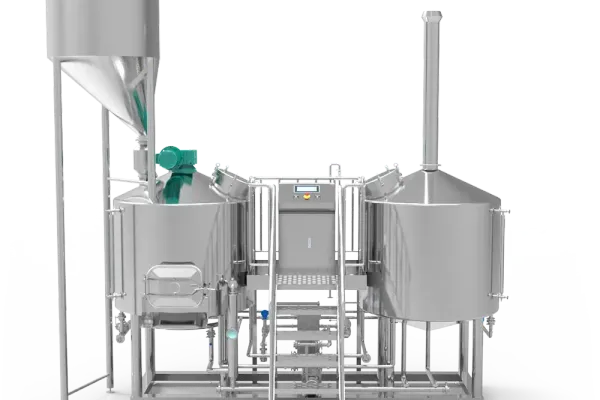
Why is Customization Crucial for Your Specific Mixing Tank Needs?
Sure, you can find standard, off-the-shelf cuves de mélange. But let’s be honest – how often does a “standard” solution fit perfectly? Especially in specialized fields like craft brewing or unique food processing, your process has specific needs. That’s where customization comes in, and why it’s so important. As manufacturers who live and breathe custom stainless steel fabrication, particularly réservoirs for the brewing and beverage industry, we know that tailoring a réservoir to your specific application makes a world of difference. A custom tank isn’t just a luxury; it optimizes how you work, improves your product quality, and fits seamlessly into your production line. It’s about getting the exact réservoir you need.
What can be customized on a réservoir de mélange? Lots!
- Size & Shape: Need a taller, skinnier réservoir to fit a tight spot? Or a wider, shorter one? We can adjust dimensions.
- Ports, Ports, Ports: Where do you need connections? We can place the inlet, outlet, sample valves, sensor connections (like thermowells for temperature probes), and manways exactly where they make sense for your workflow and process inside the réservoir. We commonly use sanitaire Tri-Clamp ferrules for these ports.
- Bottom Shape: Need every last drop out? A cone bottom with a specific slope is great for that, especially for harvesting yeast in brewing or settling solids. Other options like dished or flat-sloped bottoms are available for different réservoir uses. A conique bottom is very popular.
- Agitator Setup: Got a specific mixer in mind? We design the réservoir to support it properly, including motor mounts and internal baffles if needed.
- Jacket Zones: Need different temperature zones in one réservoir? We can create multiple veste sections for finer contrôle de la température.
- Surface Finish: How smooth does the inside need to be? We offer different levels of polished finish for the interior and exterior, critical for sanitaire needs or just for looks. A #4 brushed exterior and a 2B or polished interior are common for réservoirs.
- Extras: Need a ladder or platform? Sight glasses to see inside? Spray balls for automated cleaning (CIP)? A special lid, like a hinged lid? Want the réservoir insulated (insulate)? We can add all sorts of accessories.
Working with a manufacturer like us, who specializes in custom stainless steel fabrication, means your réservoir de mélange becomes a purpose-built tool, not just a generic container. This tailored configuration helps you make the best product possible, efficiently and safely. This level of detail for your réservoir est essentiel.
Ensuring Sanitary Design: What Features Matter in Food and Beverage Tanks?
When you’re making something people will eat or drink, keeping things clean isn’t optional – it’s everything. In the food and beverage industry, including brewing, sanitaire design for equipment like cuves de mélange is critical for safety and quality. A réservoir used for consumables must be designed to stop bacteria from growing and be super facile à nettoyer and sanitize effectively. As builders of tanks for food et boisson applications, including countless brewing réservoirs, we focus heavily on sanitaire design features.
What makes a réservoir de mélange truly sanitaire?
- The Right Material: We use food-grade acier inoxydable, usually Acier inoxydable 304. For products that are extra salty or acidic, we often recommend 316l stainless steel because it has even better corrosion resistance. 316L is a top choice for demanding sanitaire réservoirs.
- Smooth Inside: All the surfaces inside the réservoir, especially the welds where pieces of metal join, must be ground completely smooth and often polished. Think mirror-smooth! This eliminates tiny cracks or pits where germs could hide. A high-quality polished finish est essentiel.
- Rounded Corners: Sharp corners inside a réservoir are hard to clean. We design internal corners with gentle curves (radii) so cleaning solutions and brushes can reach everywhere.
- Drains Properly: The bottom of the réservoir needs to slope towards the outlet port so everything drains out – no puddles left behind after emptying or cleaning. Cone bottom designs are excellent for this.
- Clean Connections: All the connection points (inlet, outlet, sensor ports) use special sanitaire fittings, like Tri-Clamp connections. These are designed to be taken apart easily for cleaning and inspection, leaving no hidden areas in the réservoir système.
- Perfect Welds: Welds need to be strong and smooth, without any gaps or holes. We often treat the welds chemically (passivation) to restore the steel’s full corrosion resistance around the weld area on the réservoir.
- Ready for CIP: Many facilities use Clean-In-Place (CIP) systems. We design the réservoir so CIP spray balls can be installed to spray cleaning solutions effectively over all internal surfaces.
Investing in a properly designed sanitary mixing tank using 304 ou Acier inoxydable 316L is an investment in your product’s safety, your customers’ health, and your brand’s reputation. It makes cleaning faster and more reliable, significantly reducing contamination risks in your réservoir. This is a core part of high-quality stainless steel mixing equipment.
Beyond the Tank: The Importance of Technical Support and Service?
Buying a big piece of equipment like a stainless steel mixing tank is just the first step. What happens after it arrives? Reliable technical support and service make a huge difference. Imagine running into an issue during a critical production run – you need help, fast! As leading manufacturers with customers worldwide, we believe strong support is just as important as the réservoir itself. It’s about partnership, not just a sale.
Why does ongoing support matter so much for your réservoir?
- Setup Help: Getting a new réservoir, especially a complex custom tank or one with an integrated mixer and controls, installed correctly is crucial. We can offer guidance or assistance with installation and commissioning to make sure everything works right from day one.
- Problem Solving: Things happen. If your agitateur stops, or you suspect an issue with the veste, quick troubleshooting support minimizes downtime and lost production. Having experts familiar with your specific réservoir spec is invaluable.
- Maintenance Tips: We want your réservoir to last a long time! We provide advice on preventative maintenance to keep your stainless steel mixing tank performing at its best for years.
- Spare Parts Access: Need a new gasket, seal, valve, or part for your mixer? Knowing you can easily get the right parts for your réservoir keeps things running smoothly.
- Process Advice: Sometimes, you might wonder how to best use your réservoir for a new recipe or specific food product. Our expertise can help you optimize your process, perhaps advising on mixing speeds or contrôle de la température profiles.
Choosing a manufacturer who stands behind their réservoirs with solid technical support gives you confidence. It’s peace of mind knowing help is available if you need it, protecting your investment. This is especially true for Startup Craft Brewery Owners learning new equipment or experienced pros pushing production limits. Good support ensures the overall reliability of your réservoir de mélange system. Explore our range of Réservoir de fermentation en acier inoxydable et réservoirs d'oxygénation, all backed by our commitment to service.
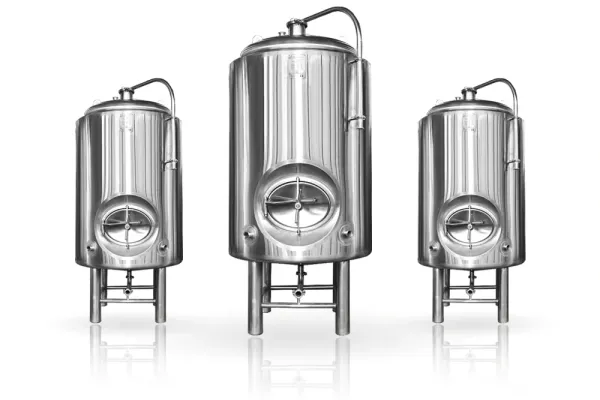
Are Used Stainless Steel Mixing Tanks a Viable Option?
Everyone loves saving money, so the idea of buying a used stainless steel mixing tank can be tempting. You might find listings under “used industrial equipment” or see an inventory of used réservoirs online. While it peut sometimes work out, especially for non-critical industrial applications, buying used carries significant risks, particularly if you need the réservoir pour sanitaire purposes like alimentation et boissons ou pharmaceuticals. Careful consideration is needed before purchasing any used stainless steel mixing tanks.
What are the potential downsides of buying a used réservoir?
- Hidden History: You often don’t know what the réservoir was used for previously. Aggressive chemicals? Allergens? Residues could remain, or the steel itself might be compromised. Verifying the past use of a réservoir is tough.
- Wear and Tear: Older réservoirs can have invisible problems like metal fatigue, tiny cracks, or hidden corrosion (pitting). These could lead to leaks, failures, or contamination down the road. The durability might be compromised.
- Sanitation Issues: Scratches, dents, or bad repairs on the inside surface of the réservoir can create tiny hiding spots for bacteria, making the réservoir impossible to truly sanitize. Assessing the internal sanitaire condition is vital but difficult.
- Wrong Fit: A used réservoir was built for someone else’s needs. It’s unlikely to have the perfect gallon size, port locations, veste type, or agitateur mount for your process. Modifying a used réservoir can be expensive and tricky.
- No Backup: Utilisé mixing tanks for sale almost always come “as is,” meaning no warranty and no manufacturer technical support if something goes wrong with the réservoir.
- Old Tech: Les réservoir design might be outdated and not meet current sanitaire standards or efficiency expectations.
So, while a used réservoir might be okay for simple mixing and storage of non-food materials, the risks for brewing, food processing, or pharma are usually too high. Investing in a new, de haute qualité, potentially custom tank from a reputable manufacturer like us ensures you get a réservoir that meets standards, is safe, built for durability, comes with a warranty, and includes access to support. Checking the spec carefully is crucial if considering used industrial mixing tanks.
How Do We, as Brewing Equipment Specialists, Ensure Your Mixing Tank Success?
Here’s the deal: we’re not just churning out metal réservoirs. We are a Équipement de brassage Usine de fabrication passionate about helping our clients succeed. Whether you’re a Startup Craft Brewery Owner filled with dreams, an Experienced Brewmaster perfecting complex brews in a Equipement de brasserie à 3 cuves 1500L setup, a growing Brewpub Chain needing consistent quality, a creative Winery or Cider Producer, or a Beverage Entrepreneur exploring Réservoir de fermentation Kombucha options – we aim to be your partner. Our deep knowledge of the entire brewing process heavily influences how we design and build every stainless steel mixing tank.
Here’s how we ensure your réservoir de mélange is a success story:
- Top-Notch Materials: We start with certified Acier inoxydable 304 et 316l stainless steel. No cutting corners. This guarantees the durability, corrosion resistanceet sanitaire qualities essential for any boisson or food réservoir. We deliver high-quality stainless steel mixing réservoirs.
- Made For You (Customization): We excel at custom stainless steel work. Need a specific gallon size to fit your batch? Unique port locations? A special agitateur? A tricky veste design for precise contrôle de la température? We build your custom tank pour votre specific needs.
- Hygiene First (Sanitary Design): Every brewing and food processing réservoir we make follows strict sanitaire guidelines. Smooth welds, proper polished finish, easy draining – everything designed to keep your product pure and cleaning simple.
- Seeing the Big Picture (Integrated Solutions): We know your réservoir de mélange doesn’t exist in isolation. We design tanks and mixer packages and consider how they fit with your entire production line, from brewhouse to cellar, ensuring everything works together seamlessly. Our système de brassage automatisé designs consider every réservoir.
- Support You Can Count On: From the first chat about your réservoir needs, through design, installation, and for years after, our team provides expert technical support. We’re here to help you get the most from your réservoir investment. We proudly offer mixing tanks USA designed and supported, often made in the USA, meeting rigorous standards.
Our mission is simple: provide high-quality, customizable brewing equipment, focusing on the essential stainless steel mixing and storage tanks, that empower you to make amazing products. We want to build the perfect réservoir de mélange solution that helps your business thrive. Your success is our success. Let’s discuss the ideal réservoir pour vous.
Foire aux questions (FAQ)
-
What’s the difference between 304 and 316L stainless steel for a mixing tank?
Acier inoxydable 304 is the most common food-grade acier inoxydable pour réservoirs, offering great general corrosion resistance et durability. Acier inoxydable 316L includes molybdenum and has less carbon, giving it superior corrosion resistance, especially against salts (chlorides) and certain acids. 316L is often chosen for réservoirs handling products with higher salt, more acidic ingredients (like some sauces or pickles), or in pharmaceutical applications needing maximum purity. The ‘L’ means low carbon, which is better for welding the réservoir structure. -
How often should I clean my stainless steel mixing tank?
Pour sanitaire uses like alimentation et boissons or pharma, the réservoir de mélange must be cleaned thoroughly after every single batch. This prevents any residue buildup or bacteria growth inside the réservoir. The exact cleaning steps (time, temperature, chemicals for CIP) depend on what you’re mixing and l'industrie rules. Consistent cleaning is key for keeping the réservoir sanitaire. -
Can I add a jacket to an existing single-wall tank?
While it might seem possible, adding a veste to an existing single-wall réservoir is usually very difficult, expensive, and risky. It involves complex welding on the réservoir which can warp the metal or compromise its structure or sanitaire state. It’s almost always better and more reliable to buy a new réservoir specifically built as a jacketed tank if you need contrôle de la température. -
What information do I need to provide to get a quote for a custom mixing tank?
To give you the best quote for a custom tank, we need details! Tell us the gallon size you need, what product(s) you’ll be mixing in the réservoir (this helps with material choice and agitateur design), if you need heating or cooling (so we can design the veste), which acier inoxydable grade you prefer (304 ou 316L), where you want the ports and manway on the réservoir, the internal/external finish (polished finish?), any size limits for your space, and if you need special certifications like ASME. The more info about your specific application for the réservoir de mélange, the better! -
How long does a high-quality stainless steel mixing tank typically last?
A well-made high-quality stainless steel mixing tank (SS 304 ou 316L) can easily last 20, 30, or even more years with proper care. Stainless steel’s natural durability et corrosion resistance give these réservoirs a very long life. How long votre réservoir lasts depends on what you mix in it, how often you use it, your cleaning routine, and regular maintenance. Buying a good réservoir is a solid long-term investment. -
What type of agitator is best for brewing?
The “best” agitateur for a brewing réservoir depends on which réservoir you mean! Mash/lauter tuns often use slow-moving rakes or simple paddles. Brew kettles might have an agitateur to prevent sticking and help boil dynamics/hop usage. Whirlpool réservoirs usually rely on a tangential inlet port to create the spin, but sometimes use a specific mixer. Fermenters typically don’t need constant agitation, but some brewers use gentle mixing for specific yeast handling. We help brewers choose the right agitateur for each specific réservoir in their Système de brassage 500L or larger setup.
Principaux enseignements :
- Acier inoxydable (304/316L) is the top choice for cuves de mélange due to durability, corrosion resistance, and being sanitaire.
- Réservoir designs are adapted for different industries (brewing, food, pharma) and specific mixing and storage tank applications.
- The correct agitateur/mixer type is vital for effective mixing in the réservoir, depending on the liquid and process goal.
- Réservoirs chemisés provide essential contrôle de la température (heating or cooling) for many processes via the veste.
- Choisir réservoir gallon capacity (30 gallon, 100 gallon, etc.) based on batch size, space, and future plans.
- Personnalisation lets you get the perfect custom tank configuration (ports, bottom, veste) for your needs.
- Sanitaire design (polished finish, smooth welds) is critical for tanks for food, boisson, and pharma.
- Look for manufacturers offering strong technical support beyond the initial réservoir purchase.
- New, de haute qualité réservoirs are generally safer and more reliable than used stainless steel mixing tanks for critical applications. Check out our RÉSERVOIRS DE MÉLANGE page for options.
- As Brewing Equipment Manufacturers, we provide high-quality, customizable stainless steel mixing tanks with expert support.
Ready to upgrade your process with a stainless steel mixing tank designed for excellence? Contact us today to discuss your unique requirements. Let our team design the ideal mixing and storage tank solution for your facility. Let’s build better beverages together, starting with the perfect réservoir. Demande de devis now!

